I went to the source of the world's best coffee - and saw firsthand why the industry is in trouble
Our drive to a coffee farm called Cafe Monteverde took us up a mountain on a dirt road for about an hour and a half. On our way, we got some breathtaking views of the area's rugged, hilly terrain and gorgeous forest cover.

The region of Monteverde, where a lot of Costa Rica's coffee is grown, is a misty, cloud-enshrined area about three hours from San Jose, the capital. The humid, shady climate is ideal for growing coffee plants, but the drive to reach it can be a challenge if you're not familiar with the roads.
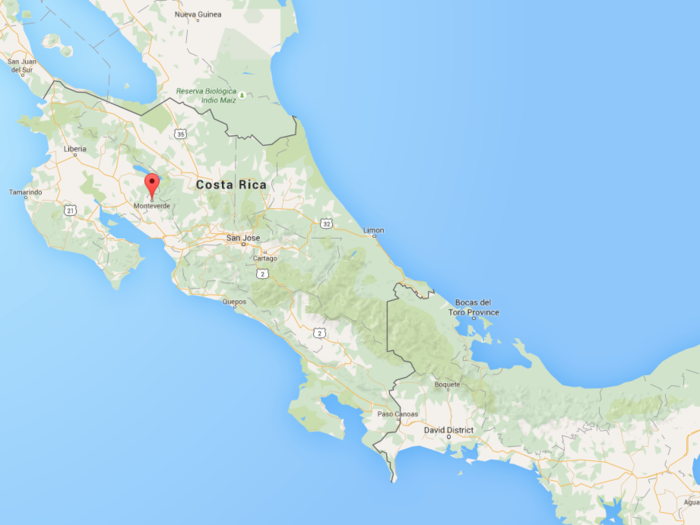
My partner (right) and I were introduced to the farm by Felix Salazar (left), a nature photographer born and raised in Monteverde who also works on the farm and gives tours in his free time. Felix walked us through the rolling green fields where the coffee for Cafe Monteverde is grown.
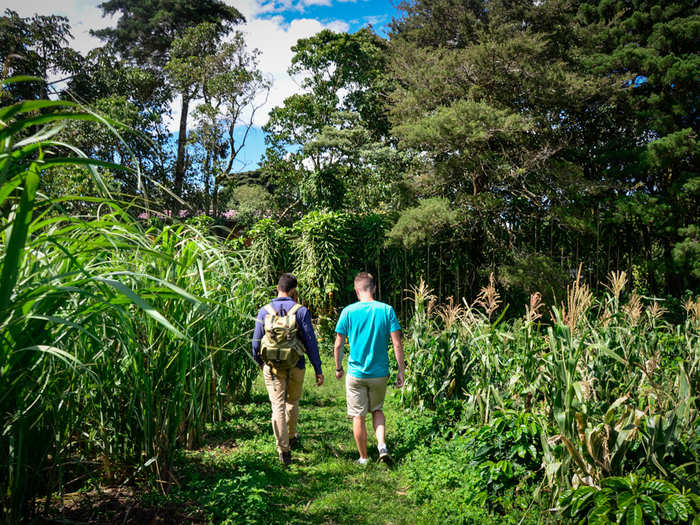
Most of Cafe Monteverde's coffee comes from Coffea arabica plants, which together account for roughly 75% of the world's coffee. Here's a shot of the many rows of coffee plants, which are interspersed with corn and other crops to help cycle nutrients through the soil.
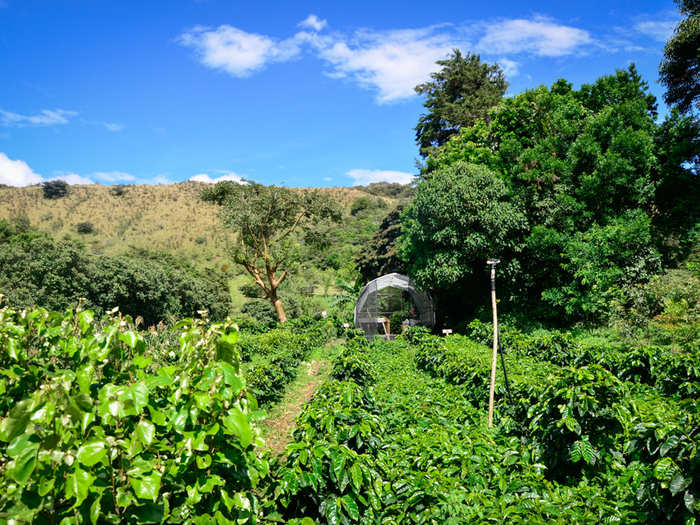
The first cultivated C. arabica plants came from the southwestern highland forests of Ethiopia. Now rare to their native region, the plants are instead found instead all over the world, from Africa and South America to Southeast Asia and the Caribbean. Here, farmers are growing tiny seedlings to study the plants' growth.
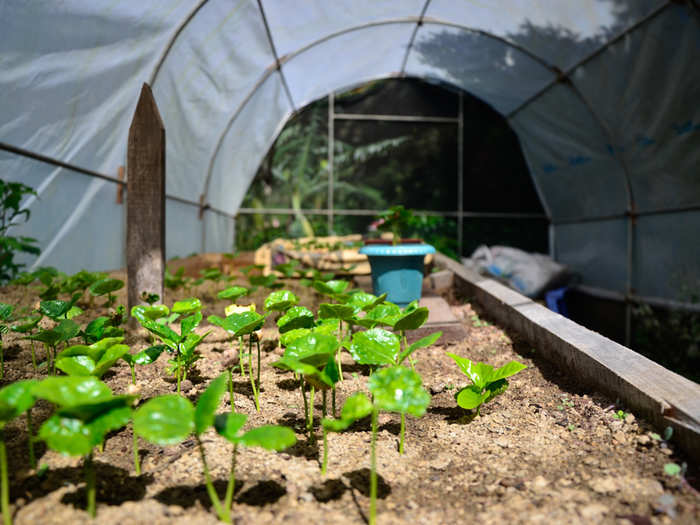
Unfortunately, since nearly all the coffee we drink started with just a few wild Ethiopian plants, the current coffee crop is far from genetically diverse. This is a big problem, and makes coffee highly susceptible to climate change. Experts estimate that all the coffee currently farmed has less than 1% of the diversity of wild Ethiopian plants.
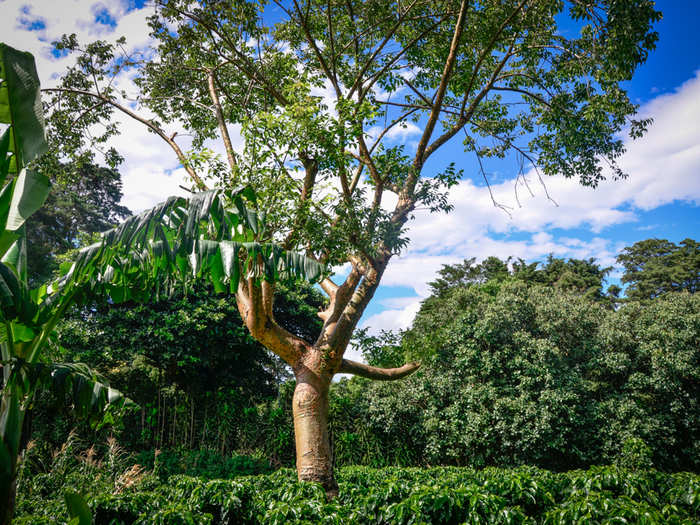
Source: "Saving coffee," "Scientific American"
The round, green, berry-like structures on the arabica plant below are coffee cherries. These are harvested, separated from the bean, and ground into coffee. Warming temperatures have put extra stress on coffee plants, though. Higher temperatures have expanded the range of a pest known as the coffee berry borer, which, along with a pesky fungus known as coffee rust, is devastating coffee crops.
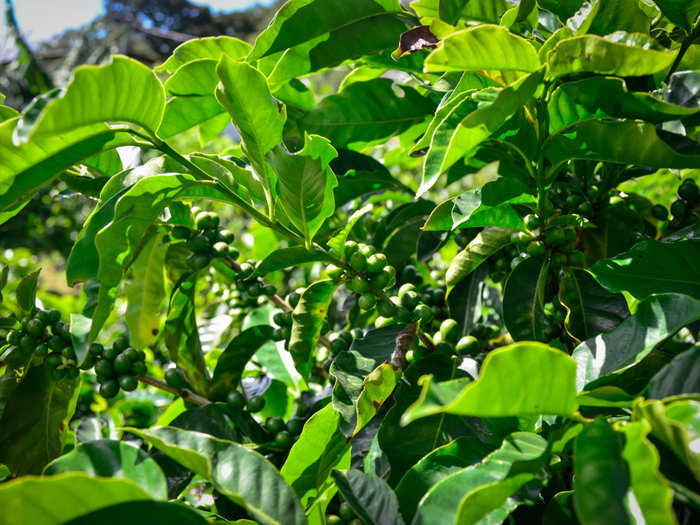
When coffee cherries ripen, they turn from bright green to differing shades of yellow, red, and purple. Farmers pick the cherries and collect them in baskets — called "canastas" — like the one shown below. Costa Rican coffee workers, many of whom are Nicaraguan immigrants, are typically paid as little as $1.50 for each full basket they pick.
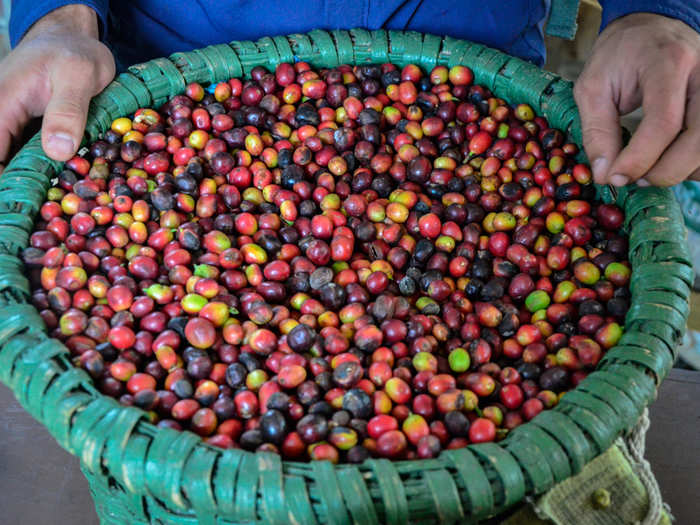
Source: "Coffee's Economics, Rewritten by Farmers," "The New York Times"
After picking, the cherries are washed, dried, and roasted using one of three main processes: dry, semi-dry, or wet. The dry process involves cleaning and drying the entire cherry without separating it from the coffee bean inside, while the wet process involves separating the bean from the cherry and immediately washing and drying them. Here I am holding some semi-dry processed beans.
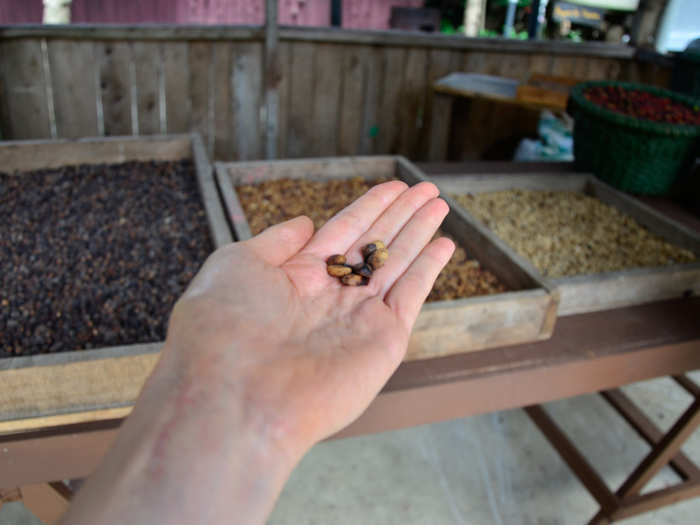
Using the semi-dry processing method, workers separate the coffee bean from the cherry in which it is encased, revealing the sticky, sweet inner coating or mucilage, shown in the photo below. This is why semi-dry processing is also called "honey processing" — because the beans have a sticky, wet consistency like honey.
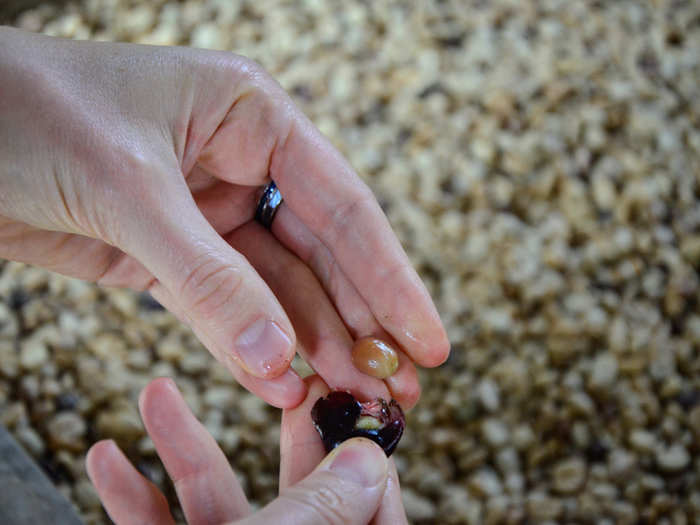
Once the cherry is separated from the bean, the sticky beans are gathered in large bins and stored for between one to 15 days. Then — no matter what process is being used — the beans are usually stored for about six months before being roasted to increase their flavor. Here's Felix showing us a washed and dried coffee bean up close.
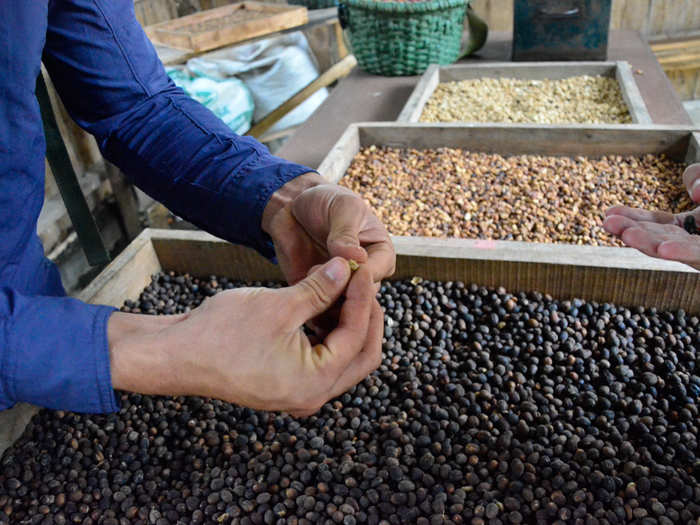
After they're roasted, the beans are either ground and packaged or sold as whole beans and then ground in a grinder, like the one shown below. When we ground the coffee at the farm's kitchen, it filled the room with a sweet, slightly spicy aroma.
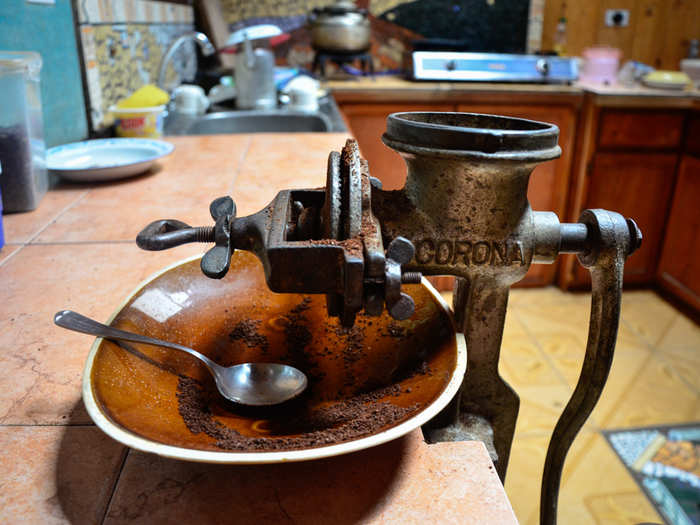
Next, our guide Felix prepared the coffee using your typical French press method. He spooned the coffee grounds into the press, poured boiling water over them, and stirred. Then, he let our coffee brew for 5-10 minutes.
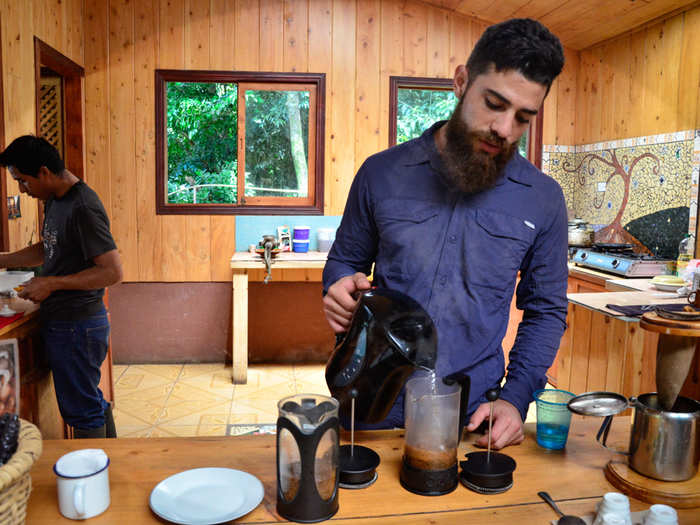
Next, he gently pressed the coffee grounds, finishing off the coffee and stopping the brewing process, and poured our brew into some sampling cups.
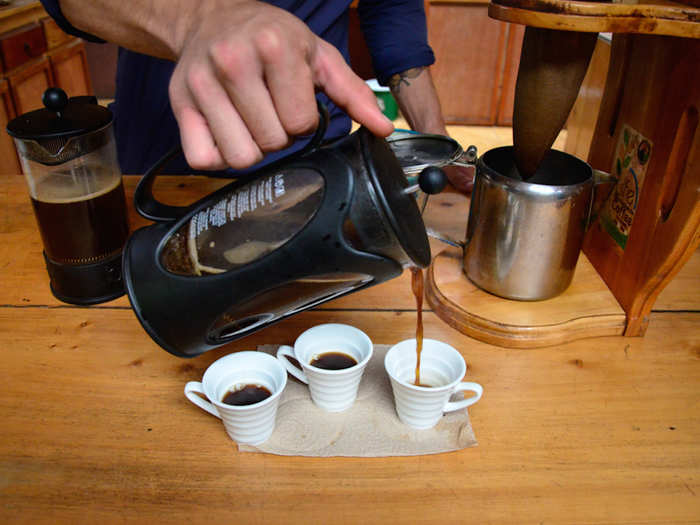
Finally, we drank. The coffee was delicious. It was sweet but had a slightly tangy and acidic aftertaste, something Felix called a "bite."
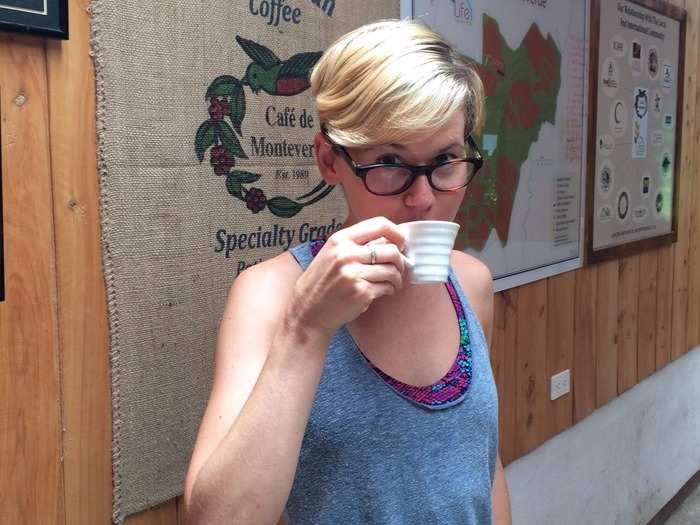
Some recent programs have been created that aim to increase these wages, like the nonprofit group Fairtrade International, which represents some 1.2 million farmers worldwide. Fairtrade certification allows the farm to pay its workers more by selling the coffee to consumers at slightly higher prices. Here's a sign from the Coopelados RL farm down the road, where some of the Fairtrade coffee sold by companies like Starbucks is grown.
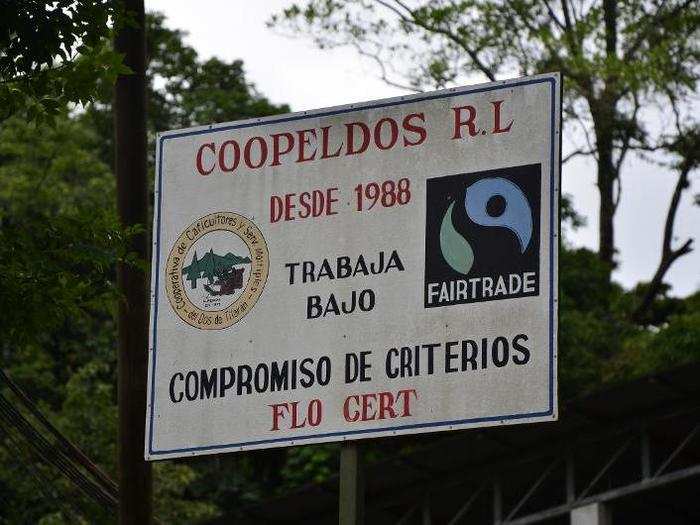
Sources: Fairtrade International and Lonely Planet Costa Rica
Some of the coffee grown at Cafe Monteverde is Fairtrade, too, but because it's sold to varying producers and then packaged under different brand names, it's impossible to trace or brand as fully Fairtrade. Instead, it's either mixed with other brands at the plant or sold here to tourists under the Life Monteverde brand.
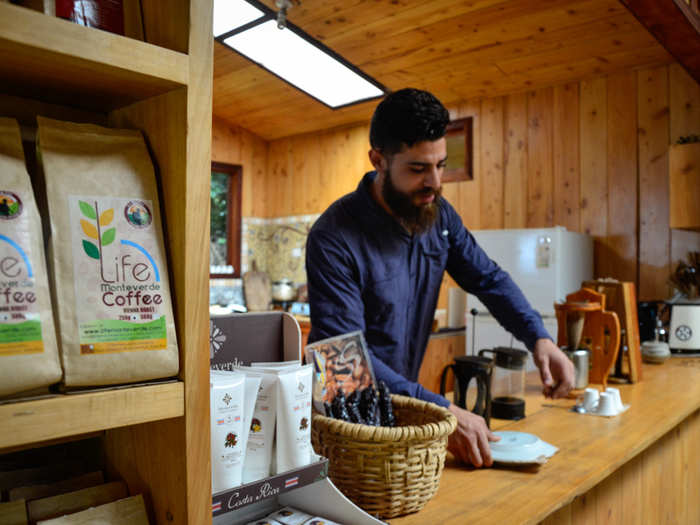
Popular Right Now
Popular Keywords
Advertisement